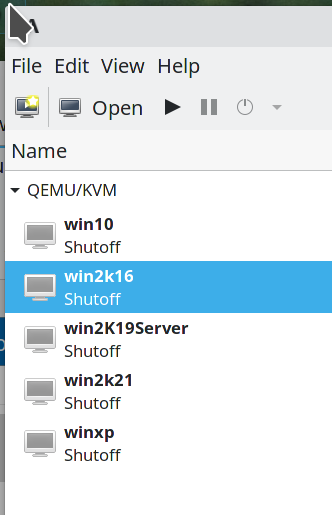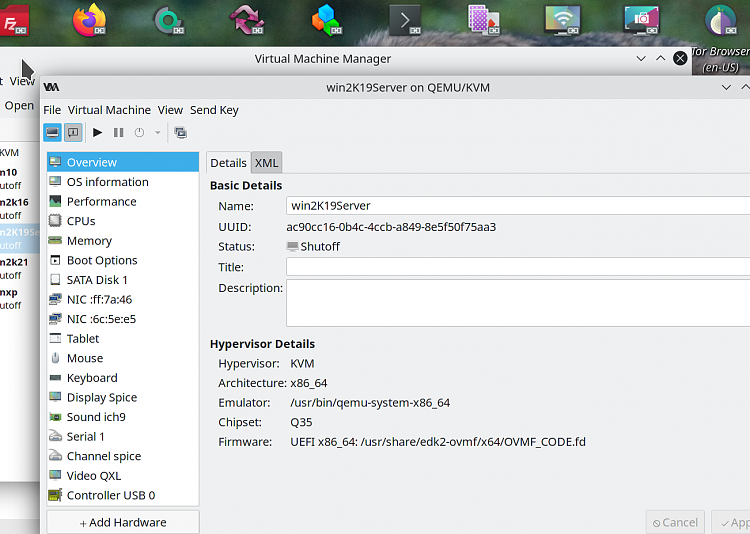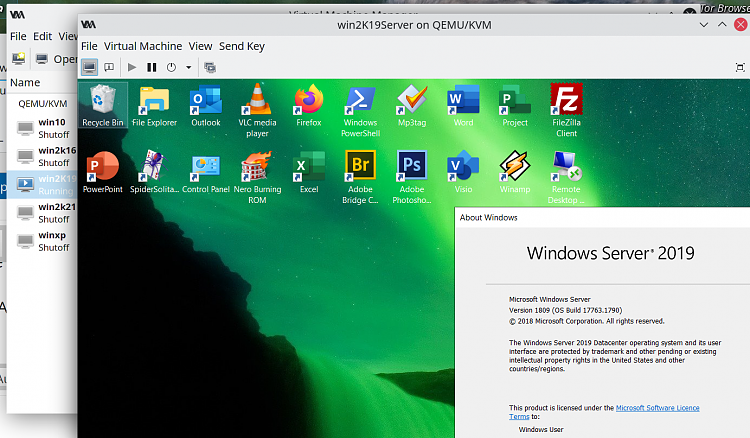New
#1
Will Windows run slowly if in a VM?
Hey, so I was thinking about switching my main OS to Ubuntu so I could get my foot in the door with linux and start experimenting around with it a bunch. However, I know if I do that a lot of games will be unavailable to me because they require Windows. That being said, I was thinking about making a Windows VM on the Ubuntu OS and using that to play games on it. I have a few questions about this.
Will I be able to play games like Siege with the same FPS as right now? If not, is there a way to go about getting more FPS in those games? Is so, is there a tutorial for it (because I don't know anything advanced and if there isn't a tutorial I don't think I'll be able to do it)
Will the Windows VM boot slowly (on same SSD as main host Ubuntu)?
Is there anything I won't be able to do on a Windows VM that I would be able to do if my main OS was windows?
(For some reason it's asking me to make sure I've included my windows version, even though it's irrelevant to the question, I'll include it) : Version 10.0.19042 Build 19042
Thanks in advance for any info! Sorry if I'm posting this in the wrong spot or anything, but I think I posted it in the right spot.
P.S My PC info is as follows (ignore weird font):
𝗖𝗮𝘀𝗲: 𝗩𝗮𝗻𝗴𝘂𝗮𝗿𝗱-𝗥𝗚𝗕 𝗕𝗹𝗮𝗰𝗸 𝗔𝗧𝗫 𝗠𝗶𝗱 𝗧𝗼𝘄𝗲𝗿 𝗚𝗮𝗺𝗶𝗻𝗴 𝗖𝗼𝗺𝗽𝘂𝘁𝗲𝗿 𝗖𝗮𝘀𝗲 𝘄/𝗧𝗲𝗺𝗽𝗲𝗿𝗲𝗱 𝗚𝗹𝗮𝘀𝘀
𝗣𝗼𝘄𝗲𝗿 𝗦𝘂𝗽𝗽𝗹𝘆: 𝗘𝗩𝗚𝗔 𝗦𝘂𝗽𝗲𝗿𝗡𝗢𝗩𝗔 𝟴𝟱𝟬 𝗚+ 𝟴𝟬 𝗣𝗹𝘂𝘀 𝗚𝗼𝗹𝗱 𝟴𝟱𝟬𝗪 𝗙𝘂𝗹𝗹𝘆 𝗠𝗼𝗱𝘂𝗹𝗮𝗿
𝗠𝗼𝘁𝗵𝗲𝗿𝗯𝗼𝗮𝗿𝗱: 𝗔𝗦𝗨𝗦 𝗧𝗨𝗙 𝗭𝟯𝟵𝟬-𝗣𝗿𝗼 𝗚𝗮𝗺𝗶𝗻𝗴 (𝗪𝗜𝗙𝗜) 𝗟𝗚𝗔 𝟭𝟭𝟱𝟭
𝗖𝗣𝗨: 𝗜𝗻𝘁𝗲𝗹 𝗶𝟱-𝟵𝟲𝟬𝟬𝗸 @ 𝟰.𝟲𝗚𝗛𝘇
𝗖𝗣𝗨 𝗖𝗼𝗼𝗹𝗲𝗿: 𝗛𝘆𝗽𝗲𝗿 𝟮𝟭𝟮 𝗥𝗚𝗕 𝗕𝗹𝗮𝗰𝗸 𝗘𝗱𝗶𝘁𝗶𝗼𝗻
𝗚𝗣𝗨: 𝗡𝗩𝗜𝗗𝗜𝗔 𝗚𝗲𝗙𝗼𝗿𝗰𝗲 𝗥𝗧𝗫 𝟮𝟬𝟳𝟬
𝗥𝗔𝗠: 𝟰𝘅𝟭𝟲𝗚𝗕 𝗗𝗗𝗥𝟰 @ 𝟯𝟮𝟬𝟬𝗠𝗛𝘇 (𝗖𝗼𝗿𝘀𝗮𝗶𝗿 𝗩𝗲𝗻𝗴𝗲𝗮𝗻𝗰𝗲 𝗣𝗿𝗼 𝗥𝗚𝗕)
𝗗𝗶𝘀𝗸 𝟬: 𝟭𝗧𝗕 𝗠.𝟮 𝗦𝗦𝗗 (𝗪𝗗𝗖 𝗪𝗗𝗦𝟭𝟬𝟬𝗧𝟮𝗕𝟬𝗕-𝟬𝟬𝗬𝗦𝟳𝟬)
𝗗𝗶𝘀𝗸 𝟭: 𝟮𝗧𝗕 𝗛𝗗𝗗 (𝗦𝗧𝟮𝟬𝟬𝟬𝗗𝗠𝟬𝟬𝟭-𝟭𝗘𝗥𝟭𝟲𝟰)
𝗗𝗶𝘀𝗸 𝟮: 𝟭𝗧𝗕 𝗧𝗢𝗦𝗛𝗜𝗕𝗔 𝗠𝗤𝟬𝟮𝗔𝗕𝗗𝟭𝟬𝟬𝗛
𝗗𝗶𝘀𝗸 𝟯: 𝗘𝘅𝘁𝗲𝗿𝗻𝗮𝗹 𝗕𝗮𝗰𝗸𝘂𝗽 𝟰𝗧𝗕 (𝗦𝗲𝗮𝗴𝗮𝘁𝗲 𝗕𝗮𝗰𝗸𝘂𝗽+ 𝗛𝘂𝗯 𝗕𝗞 𝗦𝗖𝗦𝗜)
𝗞𝗲𝘆𝗯𝗼𝗮𝗿𝗱: 𝗥𝗢𝗖𝗖𝗔𝗧 𝗩𝗨𝗟𝗖𝗔𝗡 𝟭𝟮𝟮 𝗔𝗜𝗠𝗢
𝗠𝗼𝘂𝘀𝗲: 𝗥𝗢𝗖𝗖𝗔𝗧 𝗞𝗼𝗻𝗲 𝗔𝗜𝗠𝗢 𝗪𝗶𝗿𝗲𝗱 𝗢𝗽𝘁𝗶𝗰𝗮𝗹 𝗚𝗮𝗺𝗶𝗻𝗴 𝗠𝗼𝘂𝘀𝗲
𝗠𝗼𝗻𝗶𝘁𝗼𝗿 𝟭: 𝗔𝗹𝗶𝗲𝗻𝘄𝗮𝗿𝗲 𝗔𝗪𝟮𝟱𝟭𝟴𝗛 𝟭𝟵𝟮𝟬𝘅𝟭𝟰𝟰𝟬 @ 𝟮𝟰𝟬𝗛𝘇
𝗠𝗼𝗻𝗶𝘁𝗼𝗿 𝟮: 𝗔𝗹𝗶𝗲𝗻𝘄𝗮𝗿𝗲 𝗔𝗪𝟮𝟱𝟭𝟴𝗛 𝟭𝟵𝟮𝟬𝘅𝟭𝟰𝟰𝟬 @ 𝟮𝟰𝟬𝗛𝘇


 Quote
Quote



